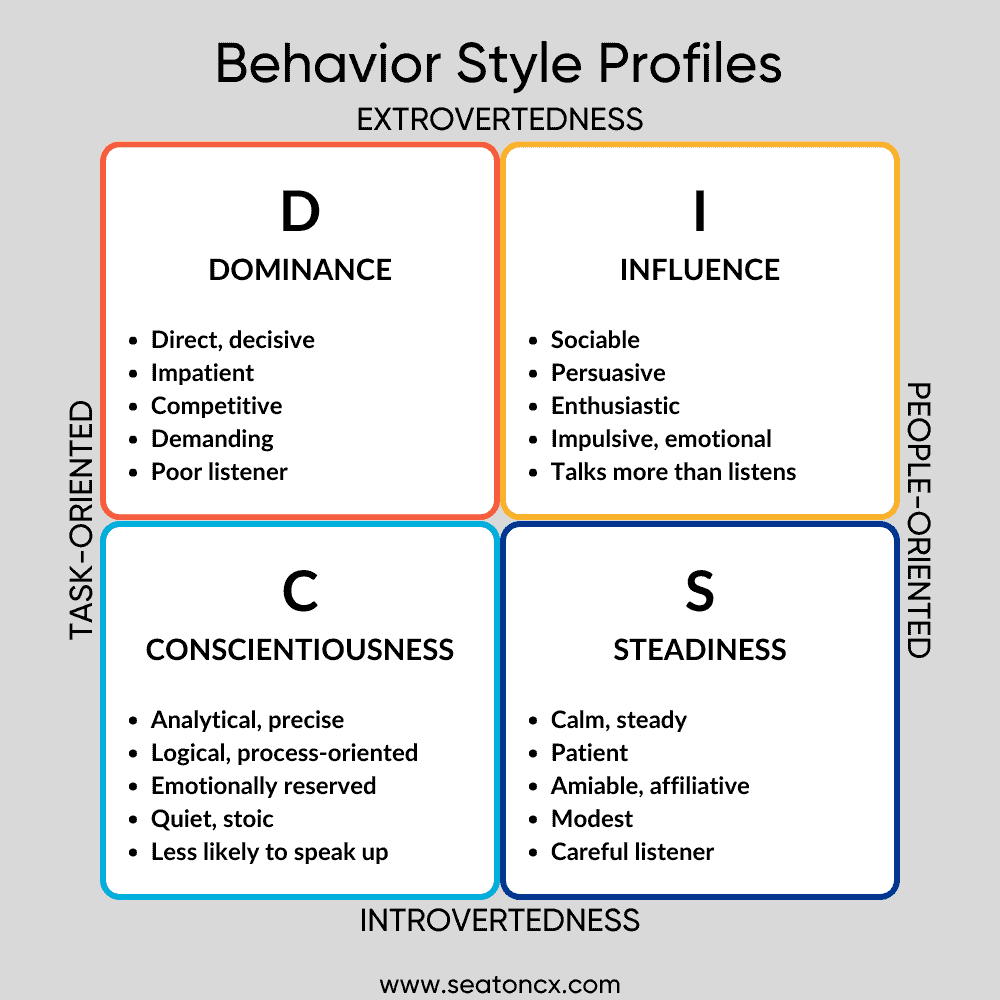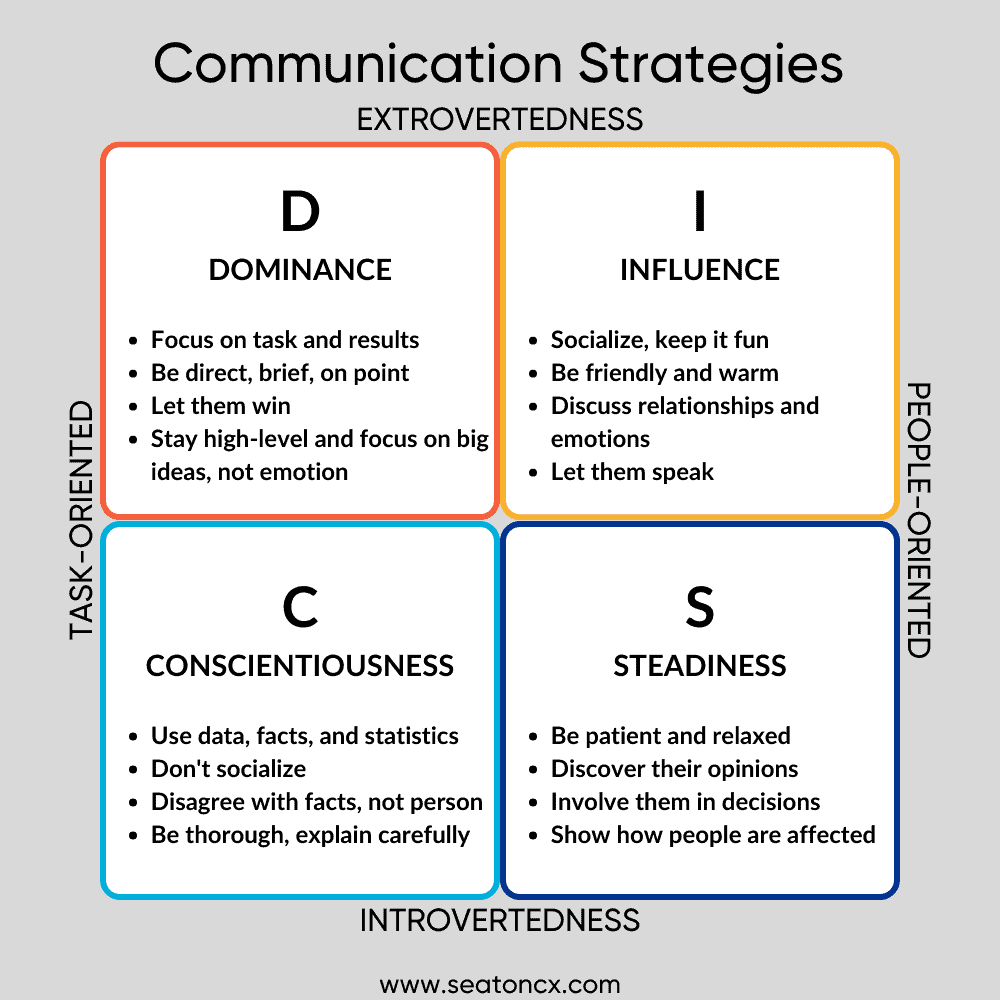When I’m emphatic that CX leaders need stakeholder analysis to get buy-in, some people look at me like I’m a rhinoceros. Or worse, a psychologist.
(Just kidding. I love psychologists!)
Sometimes I get asked “can’t I just talk to people and build relationships naturally?” And the answer is yes, you can! If you’re satisfied with the results you’re getting, keep doing what you’re doing.
But what if there’s a way to have more productive conversations with less effort? A method that creates more time for the work you love, and less time feeling like a junior con-artist trying to swindle people into supporting your idea—would you try it?
There are several reasons you should:
- You want the fastest path to results with the lowest chance of blunders.
- You desire authentic relationships with honest communication.
- You value a systematic process based in 100+ years of behavioral research that guides your actions.
- You want people to listen to your ideas and involve you in decisions, instead of ignoring you or treating you like a vulture.
We all have a natural behavior style at work. It’s a product of our personality, our preference for extroversion or introversion, our focus on tasks or people, and how we make decisions.
Our style guides how we communicate. How much we listen and how much we talk. Whether we socialize with coworkers, or keep it “strictly business.” Whether we speak up in meetings or stay quiet. Whether we interrupt or wait our turn to talk.
When we talk to stakeholders, we tend to communicate in our own style. Because it’s natural. Because it’s comfortable. We do it without thinking.
But if you want to have breakthrough conversations, don’t speak in your own style—talk to people in their style.
How do you know their style? First you have to have a framework.
How to profile stakeholders with DISC
Start with a personality model. There are many options, from Myers-Briggs to Whole Brain Thinking. I prefer DISC because it’s simple and effective—but use whatever is easiest for you to internalize.
You can’t mandate that your stakeholders take a formal assessment or subject them to a psych eval (but wouldn’t that be fun!), so you have to use observation. Watch them and make an educated guess.
Behavior profiling through observation is a heuristic technique—it’s not optimal, perfect, or fool-proof. But it’s fast and good enough to develop an understanding of another person’s communication style. Then we can experiment and adjust as we continue to learn.
The DISC model categorizes an individual’s behavior and personality traits into four groups. The acronym DISC stands for Dominance, Influence, Steadiness, and Conscientiousness.
- Dominance refers to an individual’s assertiveness and willingness to take charge or control of a situation. High dominance individuals are often seen as confident, ambitious, and results-oriented.
- Influence refers to an individual’s ability to communicate, persuade, and lead others. High influence individuals are often seen as outgoing, sociable, and optimistic.
- Steadiness refers to an individual’s patience, persistence, and ability to work well under pressure. High steadiness individuals are often seen as dependable, calm, and composed.
- Conscientiousness refers to an individual’s attention to detail, follow-through, and ability to plan and organize. High conscientiousness individuals are often seen as reliable, organized, and responsible.

Dominance and Influence styles tend toward extroversion, while people with Steadiness and Conscientiousness styles are often introverts.
Dominance and Conscientiousness styles are task-focused, while Influence and Steadiness are people-focused.
As you observe stakeholders, identify their primary and secondary styles. This provides insight into how they tend to behave in different situations, how they react to stress, how they communicate and make decisions, and how they are motivated.
How to communicate based on DISC profile
When you understand someone’s preferred style, then you can tailor your communication to resonate with them. Stop trying to socialize with the analytical accountant. Don’t share your linear regression model with the goal-crushing sales maven. If you want people to listen to you, speak their language.
When you understand their DISC profile, you can plan your conversations.
- If the stakeholder has a high dominance style, be direct and to the point. Avoid meandering explanations and emotional pleas. They appreciate clear goals, challenges, and opportunities for leading.
- If the stakeholder has a high influence style, focus on building rapport and creating a positive, upbeat atmosphere. They appreciate being recognized and acknowledged for their contributions. Give them opportunities to contribute in meetings and presentations.
- If a stakeholder has a high steadiness style, be patient and consistent when communicating with them. Don’t pressure them for a decision when presenting new information or explaining changes. They appreciate clear plans and stability. Involve them in decisions.
- If a stakeholder has a high conscientiousness style, be clear and detail-oriented when communicating with them. They may be skeptical of ambiguity or lack of structure. Explain details, metrics, and processes. Disagree with the facts, not the person.

Be a chameleon
We’re all attracted to people who are like us. Our social circles outside of work are dominated by sameness: people who hold the same interests, beliefs, values, and views. We like to be with people who root for the same sports team. Like the same music. Drink the same beer. Believe in the same conspiracy theories. This is normal and natural human behavior.
But at work, we can’t follow the same patterns: associating with people we like, and avoiding people who annoy us, intimidate us, frustrate us, disgust us, or make us want to go scream in our cars for a day and a half.
We have to be chameleons—changing our communication styles to match the person we’re speaking to.
Because we don’t choose our coworkers like we choose our friends—but we need them to make our customer experience initiatives a success.
Hey, CX Leader!
Don’t miss out on CXPRESSO—the weekly email for brave CX leaders like you. You’ll get CX leadership ideas in your inbox every Monday morning to kickstart the week. Join us!
